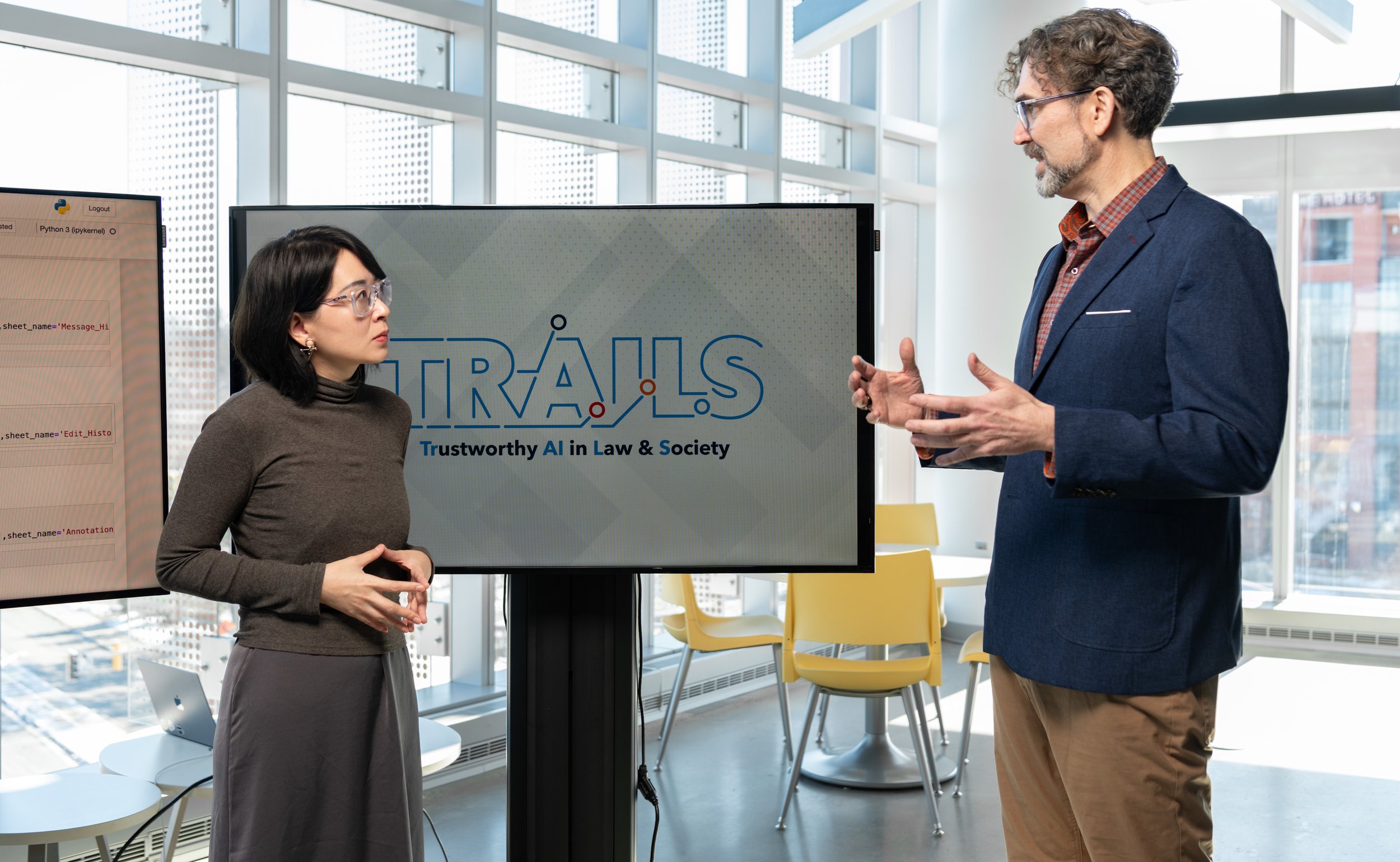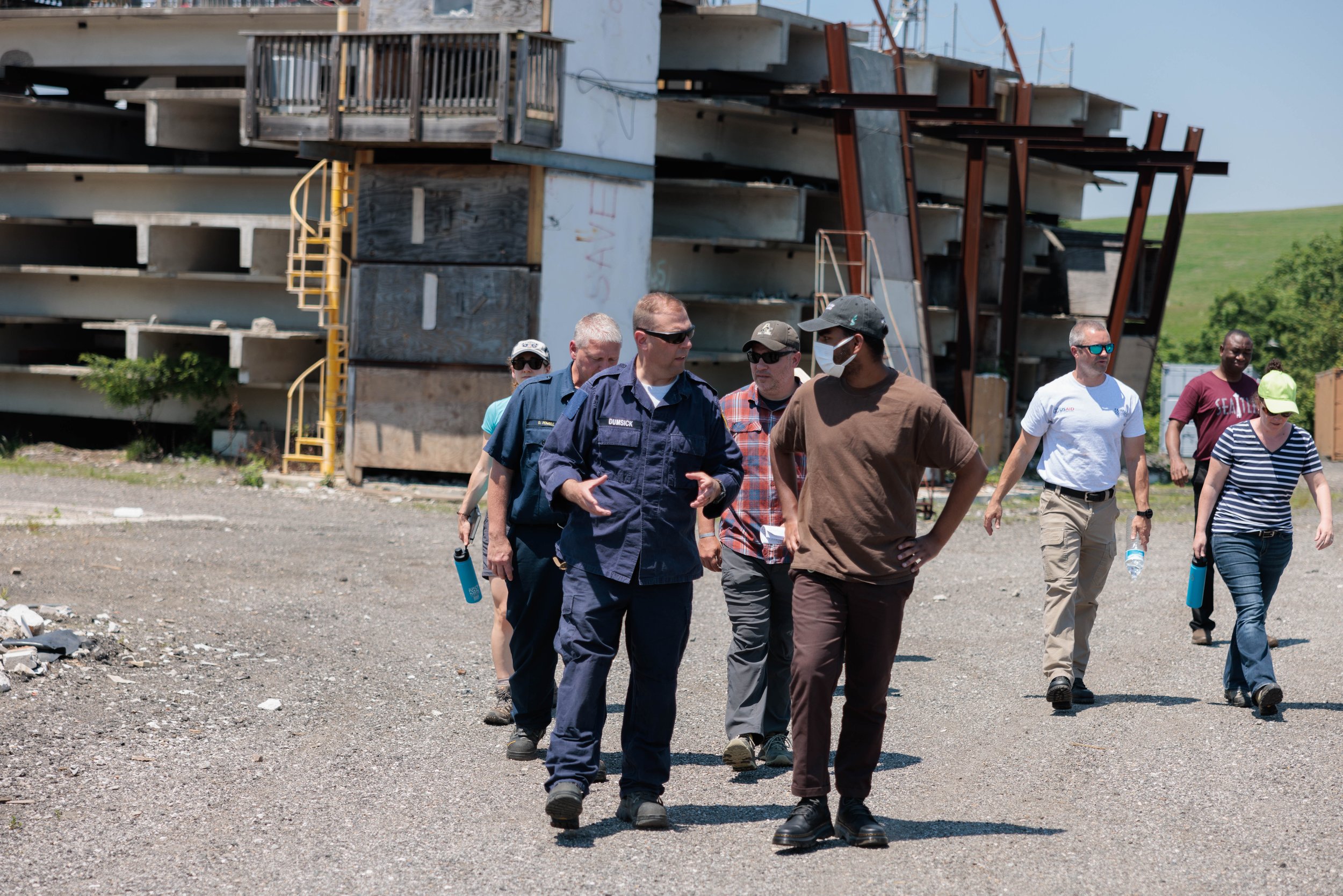
Professor of Engineering Management and Systems Engineering
Zoe Szajnfarber
George Washington University
Areas of Expertise: AI Evaluation, Human-AI Teaming, & AI-Enabled System Design
Zoe Szajnfarber is a professor of engineering management and systems engineering and the Director of Strategic Initiatives for Engineering at George Washington University. She is also Chief Scientist of the Systems Engineering Research Center (a DoD UARC), and the Faculty Lead for the GW Trustworthy AI initiative. Her research focuses on the design and development of complex systems in their socio-technical context, with a particular emphasis on leveraging contributions from non-traditional sources of expertise.
-
Szajnfarber, Z., Topcu, T. G., & Lifshitz-Assaf, H. (2022). Towards a Solver-Aware Systems Architecting Framework: Leveraging Experts, Specialists and the Crowd to Design Innovative Complex Systems. Design Science, 8, E10. doi:10.1017/dsj.2022.7
Abstract: This article proposes the solver-aware system architecting framework for leveraging the combined strengths of experts, crowds and specialists to design innovative complex systems. Although system architecting theory has extensively explored the relationship between alternative architecture forms and performance under operational uncertainty, limited attention has been paid to differences due to who generates the solutions. The recent rise in alternative solving methods, from gig workers to crowdsourcing to novel contracting structures emphasises the need for deeper consideration of the link between architecting and solver-capability in the context of complex system innovation. We investigate these interactions through an abstract problem-solving simulation, representing alternative decompositions and solver archetypes of varying expertise, engaged through contractual structures that match their solving type. We find that the preferred architecture changes depending on which combinations of solvers are assigned. In addition, the best hybrid decompositionsolver combinations simultaneously improve performance and cost, while reducing expert reliance. To operationalise this new solver-aware framework, we induce two heuristics for decomposition-assignment pairs and demonstrate the scale of their value in the simulation. We also apply these two heuristics to reason about an example of a robotic manipulator design problem to demonstrate their relevance in realistic complex system settings.
-
Topcu, T. G., Zhang, L., & Szajnfarber, Z. (2023). Does Open Innovation Open Doors for Underrepresented Groups to Contribute to Technology Innovation?: Evidence from a Space Robotics Challenge. Space Policy, 64, 101550.doi:10.1016/j.spacepol.2023.101550.
Abstract: Diversity, equity, and inclusion (DEI) are increasingly being recognized as important policy goals for organizations across government and the industry. Improved DEI has been linked to both substantive improvement in innovation performance and societal good. However, despite a stated emphasis on DEI, progress has not kept up with aspirations. One indirect policy approach that holds promise is wider adoption of Open Innovation (OI) as part of an innovation toolkit. Proponents contend that OI reduces barriers to entry and garners productive contributions from diverse contributors. While there is anecdotal support for the diversifying potential of OI, so far, there is a dearth of empirical evidence connecting OI to DEI with consideration of performance outcomes, beyond `winners´. To study this link directly, this article leverages data from a previously conducted unique field experiment that explicitly tracked the population of potential solvers and their performance on a National Aeronautics and Space Administration (NASA) space robotics problem. We found that while OI attracted different solvers than the reference internal workforce, there was important variation in both the extent and direction of the observed differences, with respect to attributes of DEI. For instance, OI attracted proportionally fewer female solvers than the already male-dominated space workforce; and that proportion decreased further among solvers providing quality solutions. On the other hand, OI proved effective at granting access to an international pool of young professionals with potentially novel perspectives. Overall, our findings suggest OI can be an effective tool for achieving some diversity policy goals, but it is not well-suited for achieving all stated aspects of diversity. Therefore, we suggest a more targeted approach to matching the opportunities for OI to achieve specific policy objectives.
-
Topcu, T. G., Mukherjee, S., Hennig, A., & Szajnfarber, Z. (2022). The Dark Side of Modularity: How Decomposing Problems Can Increase System Complexity. Journal of Mechanical Design, 144(3), 031403. doi:10.1115/1.4052391
Abstract: IDecomposition is a dominant design strategy because it enables complex problems to be broken up into loosely coupled modules that are easier to manage and can be designed in parallel. However, contrary to widely held expectations, we show that complexity can increase substantially when natural system modules are fully decoupled from one another to support parallel design. Drawing on detailed empirical evidence from a NASA space robotics field experiment, we explain how new information is introduced into the design space through three complexity addition mechanisms of the decomposition process: interface creation, functional allocation, and second-order effects. These findings have important implications for how modules are selected early in the design process and how future decomposition approaches should be developed. Although it is well known that complex systems are rarely fully decomposable and that the decoupling process necessitates additional design work, the literature is predominantly focused on reordering, clustering, and/or grouping-based approaches to define module boundaries within a fixed system representation. Consequently, these approaches are unable to account for the (often significant) new information that is added to the design space through the decomposition process. We contend that the observed mechanisms of complexity growth need to be better accounted for during the module selection process in order to avoid unexpected downstream costs. With this work, we lay a foundation for valuing these complexity-induced impacts to performance, schedule, and cost, earlier in the decomposition process.
-
Vrolijk, A., Roman, M. C., & Szajnfarber, Z. (2022). Who Provides What and When: Mapping the Benefits Stemming from Innovation Contests. Research-Technology Management.
Abstract: An innovation contest is an effective way to address an organization’s technical needs. With its pay-for-success and winner(s)-take-all format, organizations have received novel and high-quality solutions to their problems at lower costs than solving them internally. These successes have driven researchers to focus on strategies that further enhance the resulting solutions. This narrow focus, however, might ignore benefits that are also important to these organizations. Our work leverages an in-depth case study of NASA’s highly successful 3D Printed Habitat Challenge; we analyzed how it benefited the relevant NASA subject matter experts. Our resulting framework characterizes the range, and sources, of potential benefits across different stages of an innovation contest, some of which we found to be more valuable than the solutions. These findings emphasize the need to broaden the existing focus on solutions and highlight new opportunities for practitioners to address their needs through innovation contests.
-
Sapol, S. J., & Szajnfarber, Z. (2020). Revisiting Flexibility in Design: An Analysis of the Impact of Implementation Uncertainty on the Value of Real Options. Journal of Mechanical Design, 142(12), 121701.
Abstract: Flexible design, often embodied as Real Options, has proven valuable in sustaining system performance under operational uncertainty. By building “options,” decision-makers buy the right, but not the obligation, to upgrade at a later time. Prior studies implicitly assume decision-makers can “call” the option in a timely manner, however, in most sociotechnical systems, this is far from certain. Budget cycles, supply chain logistics and separation of authority and budget lead to implementation delays. To test, we developed a Monte Carlo simulation of a representative Army vehicle project. We first replicate prior studies without implementation delays, then incorporate delays for comparison. Once added, the value of flexibility degrades rapidly. The rate of degradation varies based on the flexibility strategy. Our results suggest a need to consider implementation uncertainty in evaluating flexible design options and open a new path for matching flexible design strategies to anticipated sources of implementation uncertainty.






